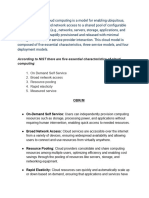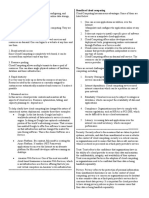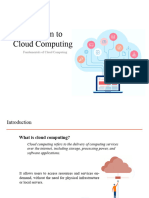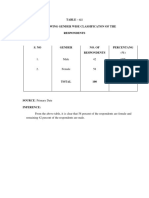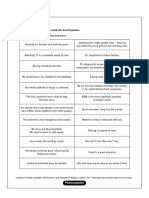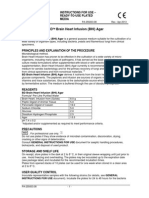0% found this document useful (0 votes)
8 views8 pagesCloud Computing Training Task01
The document provides a comprehensive overview of cloud computing, detailing its definition, key aspects, benefits, challenges, and future trends. It categorizes cloud services into three models: IaaS, PaaS, and SaaS, and discusses various deployment models including public, private, hybrid, and multi-cloud. Additionally, it covers core cloud concepts such as virtualization, containers, networking, security, storage, and compute resources.
Uploaded by
infintysecCopyright
© © All Rights Reserved
We take content rights seriously. If you suspect this is your content, claim it here.
Available Formats
Download as PDF, TXT or read online on Scribd
0% found this document useful (0 votes)
8 views8 pagesCloud Computing Training Task01
The document provides a comprehensive overview of cloud computing, detailing its definition, key aspects, benefits, challenges, and future trends. It categorizes cloud services into three models: IaaS, PaaS, and SaaS, and discusses various deployment models including public, private, hybrid, and multi-cloud. Additionally, it covers core cloud concepts such as virtualization, containers, networking, security, storage, and compute resources.
Uploaded by
infintysecCopyright
© © All Rights Reserved
We take content rights seriously. If you suspect this is your content, claim it here.
Available Formats
Download as PDF, TXT or read online on Scribd
/ 8









